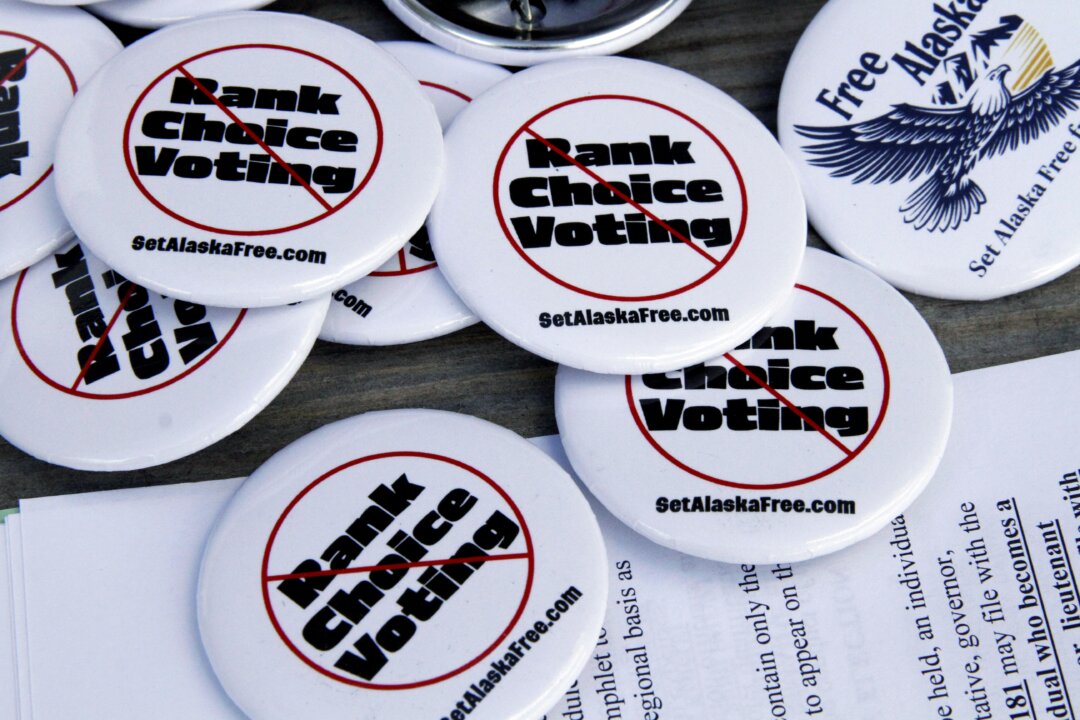Should voters approve of Ballot Measure 117, Oregon could become the third state in the nation to try ranked choice voting.
If Oregonians adopt ranked choice voting (RCV) by saying yes to Measure 117 in November, they won’t just vote for their favorite candidate in future elections. They will also select their second, third, and fourth favorites.
Proponents of RCV say that it provides better representation because winners are said to have a broad base of voter support, even if they weren’t a voter’s first choice.
Critics worry that RCV is complicated, costly, and hard for voters to understand. Consequently, they claim that it inhibits voter participation and leads to ballot errors.
All agree that implementing RCV would require a robust voter education effort.
In Order of Preference
Like most states, Oregon now uses plurality voting, in which the candidate who gets the most votes wins. Candidates do not need to get a majority to win.
In RCV elections, voters rank candidates from their most to least preferred. If no candidate receives more than 50 percent of the first-choice votes in the first round, vote tabulation moves to round two. The candidate with the least number of first-choice votes is removed, and his or her votes are reallocated to the candidate who was the second choice on those ballots. The process continues until a candidate achieves a majority.
Should Measure 117 pass, Oregonians would use RCV to select the president, U.S. senators, and congressional representatives, as well as statewide executive positions including governor, secretary of state, treasurer, and attorney general.
The law would also authorize cities, counties, school districts, and other jurisdictions to use RCV for local elections if they choose.
It would not affect how voters select state legislators, who approved House Bill 2004 to refer the ballot measure to voters in their 2023 legislative session. The vote went along party lines, except for one Republican who joined Democrats in voting in favor of the bill.
“Ranked choice voting creates a more collegial electoral environment,” said House Speaker Dan Rayfield, chief sponsor of HB 2004. It “allows all voters to be engaged and excited about election outcomes and encourages good candidates running good campaigns.”
Because Oregon voters are unfamiliar with RCV, Measure 117 would allow four years for election officials to educate them before it takes effect in 2028.
Election officials shared their objections to the measure in testimony to the Oregon Legislature.
Where the Rubber Hits the Road
The Oregon Association of County Clerks (OACC), which represents election officials across the state, opposes Measure 117, noting in written testimony in 2023 its concerns about implementation, costs, and staff and resource levels. Its members also worry about the difficult task of “seeking to reconcile the number of ballots accepted and tallied when multiple ballot pages/sheets are sent to each voter.”
The OACC expressed “serious concerns” that the reforms are setting clerks up to fail in an “already hostile environment.”
“Public confidence in elections is already low, and the complications involved with RCV could potentially fuel conspiracy theories and allegations related to lack of transparency,” the association added.
Oregon Ranked Choice Voting Advocates is leading the campaign in support of the measure. It says that RCV “allows candidates to run without fear of splitting voter support, opening a pathway for more candidates of similar backgrounds and values to run and giving voters more choices.”
The measure has been endorsed by the League of Women Voters of Oregon, the Oregon American Civil Liberties Union, the Urban League of Portland, the Coalition of Communities of Color, the Next Up Action Fund, and various labor unions.
The Merits of the Measure
On Sept. 17, six panelists sat down in Portland to debate the merits of RCV for Oregon.
“People can vote for the person they want and vote for their second choice rather than the lesser of two evils,” argued state Rep. Mark Gamba (D), who cosponsored HB 2004. He said RCV will “give the 30 percent of Oregonians who are nonaffiliated voters a voice” and called it a step toward a “more fair and representative democracy.”
State Rep. Ed Diehl (R), who opposed the bill, believes RCV is fraught with risk.
“Voters are being asked to make a drastic change in how they vote and how we tabulate votes,” he said during the debate. “Before going down that path, we should have absolutely, indisputable proof that RCV meets the goals of transparency, ease of use, cost-effectiveness, and accessibility. That evidence does not exist.”
Oregon state Sen. Janeed Sollman, a chief sponsor of HB 2004, said, “RCV will provide more reflective representation, provide more meaningful choices by allowing voters to rank the candidates, and has been shown to improve election turnout since people feel their voice is truly heard.”
Phil Izon, who led the effort to repeal RCV in Alaska, said the system is confusing and leads to outcomes that voters do not expect.
“Voters should understand that, under RCV, their vote may not count,” he said.
If a voter leaves columns on their ballot blank and their candidates are eliminated from contention, that voter’s ballot is not counted in the final tabulation, giving those who fully complete their ballot more influence in the electoral process, he said.
“So it’s not a ‘one person, one vote’ system,” Izon said.
He also said that RCV ignores most voters’ rankings and can eliminate a candidate who was preferred overall.
Alaskan voters are now considering a ballot measure to repeal RCV only two years after their first election using the system.
Sarah Wolk, executive director of the nonpartisan Equal Vote Coalition, said she previously supported RCV but after more than six years studying election science, she now opposes it.
“The more candidates in the race, the higher the likelihood of vote splitting and a spoiled election,” Wolk said. “We want more voter choice, but shouldn’t implement an outdated system that breaks in the scenario we’re trying to create.”

